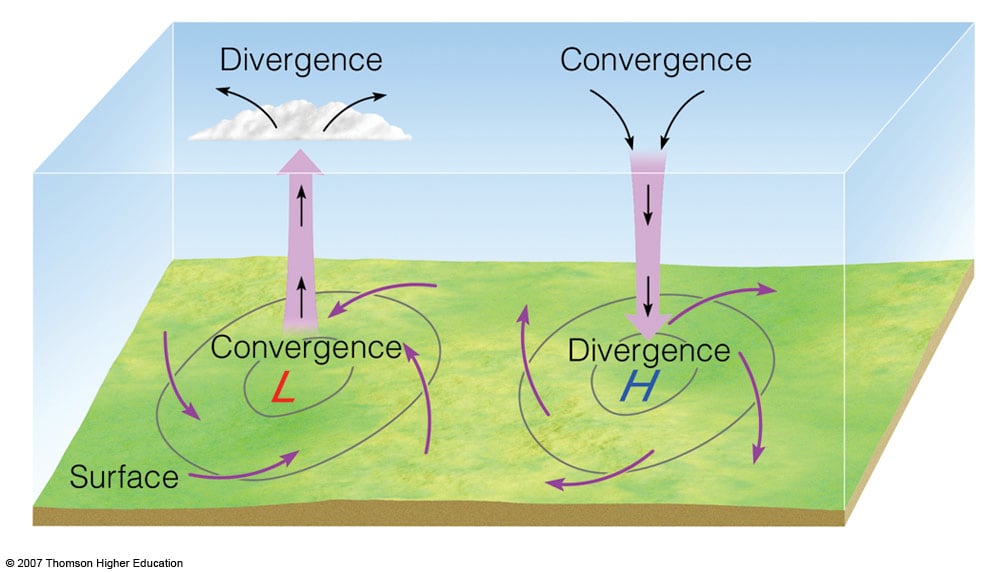How Does Subsidence Affect Weather?
by David Moran, on May 9, 2018 2:39:51 PM
Air is in motion all around us, moving both vertically and horizontally. Whether clouds or precipitation form partially depends on whether air rises or sinks. When air descends, this is called subsidence, and it can have significant implications on the weather that you observe.
What causes air to rise or sink? In meteorology, there is a principle known as the law of mass conservation. If you look at meteorology books, you might see this law described as a mathematical equation. However, the explanation is relatively simple. Suppose there is a volume of air (called a parcel in meteorology) at a level above the ground. If air is going into the parcel, then there must be some air exiting it to maintain a constant mass. When air is converging at the height of the parcel, air is rising above the parcel and sinking below it. This sinking is known as subsidence. So, why does this convergence cause rising air above the parcel and descending air below it? Imagine having a tube of toothpaste that's mostly full. If you squeeze the tube in the middle, the toothpaste above goes up, and the toothpaste below goes down. This action is similar to what happens in the atmosphere.
 Convergence and Divergence in the Atmosphere
Convergence and Divergence in the Atmosphere
The rising and sinking motion of air plays an essential role in the observed weather. If there is sufficient moisture present, rising air causes clouds to develop, which may eventually allow for precipitation. On the other hand, sinking air (subsidence) leads to generally fair weather with very few clouds and little to no rain. As the air sinks, the air compresses and warms. This scenario is associated with conditions under a ridge or to the west of a trough.
While rising air typically leads to more significant weather events, subsidence can also be substantial. Subsidence can occur over a short period or a a more extended period if a blocking pattern develops, possibly leading to drought conditions. Knowing where subsidence may happen can help you anticipate weather conditions for a location.








